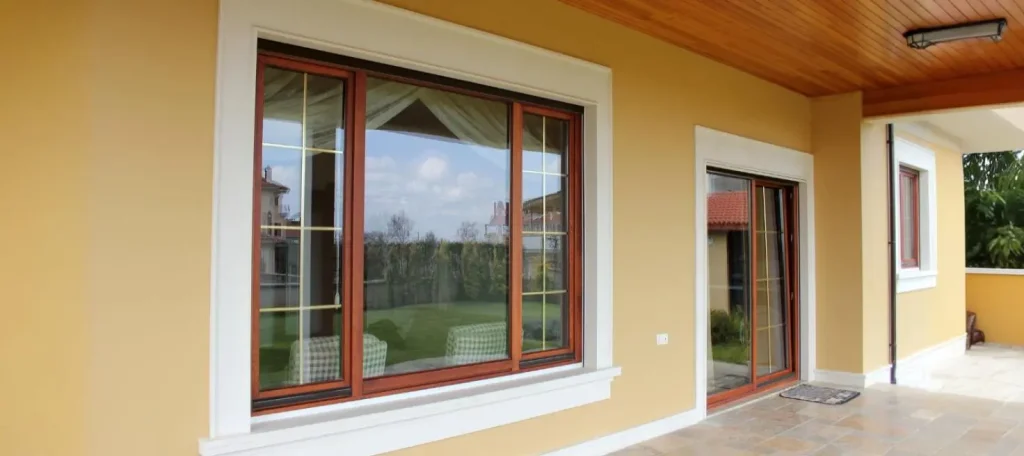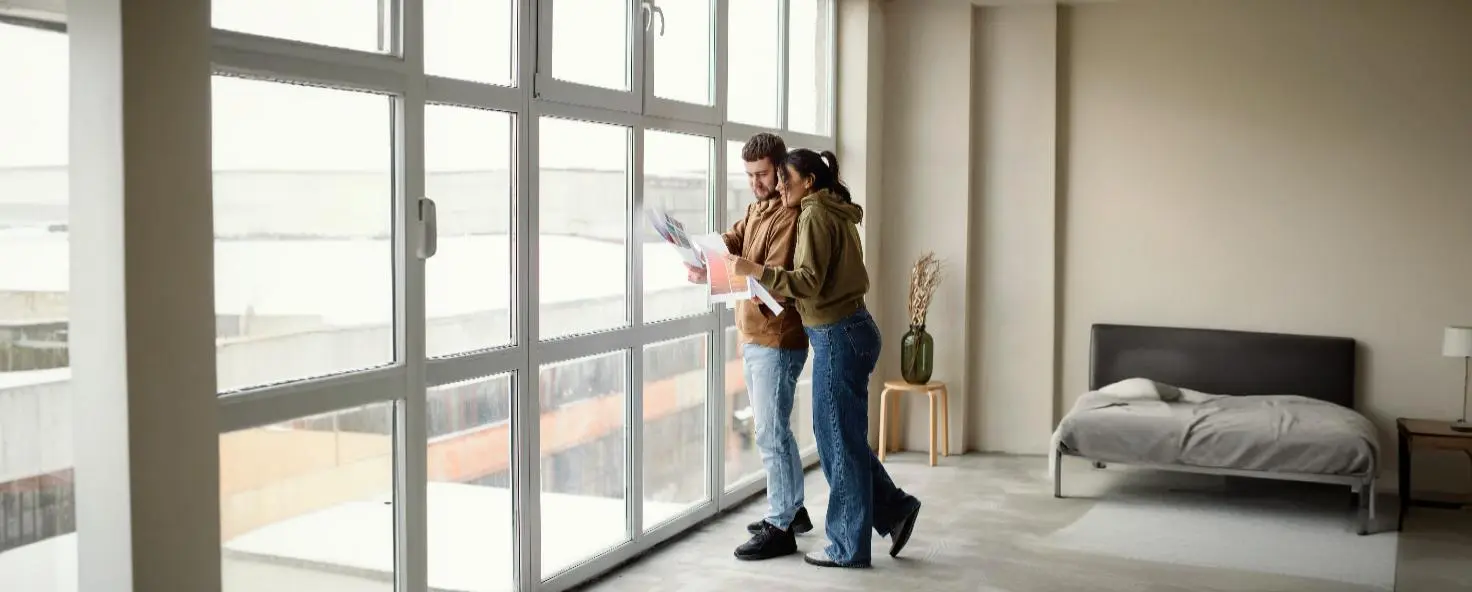uPVC windows and doors are some of the most commonly used components in modern construction. Contractors and homeowners alike are increasingly opting for uPVC windows for home construction due to the many benefits that they offer. Read on to discover the uPVC full form and uPVC meaning, while learning all about uPVC windows, including their features, types, advantages, disadvantages and cost in this blog.
What is uPVC?
Unplasticised Polyvinyl Chloride or uPVC is PVC that is not coated with plasticisers like BPA (Bisphenol A) and phthalates. uPVC material is formed by mixing raw materials like PVC and stabilisers and moulding them into the desired shapes under heat. This product is then subjected to several surface treatments to obtain the necessary visual appearance. uPVC is used in multiple aspects of buildings, such as plumbing, drainage, electrical conduiting, roofing and door and window framing.
uPVC Window Design
Unlike PVC—which is flexible and malleable due to the plasticiser coating—uPVC is hard, strong and inflexible. PVC is vulnerable to degradation under exterior weather conditions, while uPVC is extremely durable when used to make windows. The uPVC material also offers many benefits that make it a better choice than other commonly used window materials like aluminium, steel and wood. Thus, the popularity of uPVC windows is growing rapidly, marking a shift in construction practices and methodologies across the world.
Types of uPVC Windows
There are multiple types available in uPVC windows, ensuring versatile options of window designs for homes. Some of the common types based on the window mechanism are:
uPVC Sliding Windows
uPVC sliding windows are a practical option for tight spaces where windows cannot be opened outwards. Such windows operate on tracks (that can be at the top/bottom/both the top and bottom) and rollers that help the window shutter slide sideways. The number of tracks commonly ranges between two and four to accommodate different sliding mechanisms and additional elements like mosquito mesh shutters.
uPVC Casement Window
A uPVC casement window opens horizontally towards the outside or inside, allowing the penetration of maximum amount of light and air. The window shutters are fixed to their frames with side hinges, enabling a 90-180 degree movement. Depending on the opening size, casement windows can be single, double or multiple paned and are ideal for small to medium sized openings at accessible heights.
uPVC Pivot Window
A pivot window rotates 90 degrees along a central axis, which may be vertical or horizontal. When opened, the shutter of such a window projects both inside and outside equally, creating a perpendicular intersection with the window frame. Therefore, these windows may cause visual barriers in their openings, partially disrupting the smooth flow of air and light.
uPVC Awning Windows
An awning window opens in the upward direction, generally towards the outside, with the help of hinges and handles. Such a window can be kept open even during light rains to allow cool air inside and is most commonly used as a part of dormer or rooftop openings.
uPVC Fixed Windows
As the name suggests, uPVC fixed windows cannot be opened to facilitate ventilation. Such windows are typically included in buildings to increase natural light penetration or to enhance interior and exterior aesthetics.
Apart from these classifications, uPVC windows can also be categorised based on their shapes, which can be customised to suit various designs like bay windows and corner windows.
Benefits of uPVC Windows
uPVC windows offer the following advantages that make them preferable over other materials:
- Cost: Although sometimes more expensive than metal windows, uPVC windows are much cheaper to install than wooden windows. However, the long term expenditure on metal windows (including repainting or rust protection) means that uPVC windows are more cost-effective.
- Durability: With minimal maintenance (including cleaning of channels and joints), uPVC windows can sustain well for decades under normal weather conditions. In contrast, wooden and metal windows require regular repainting, repolishing and recoating to ensure durability.
- Aesthetic Options: uPVC windows styles and designs are numerous and versatile. Different colours are available in the market and their finish can even be customised to resemble materials like wood and steel.

- Corrosion Resistance: While metal windows can undergo rusting caused by moisture and wooden windows are vulnerable to termite attacks, uPVC window frames do not get degraded by environmental factors. They do not undergo chipping, corrosion or peeling.
- Thermal and Sound Insulation: Unlike metal windows, uPVC windows do not conduct heat. They are also extremely good barriers against sound, thus helping keep indoor spaces thermally comfortable and noise-free.
Disadvantages of uPVC Windows
Despite its many benefits, a uPVC glass window can have several drawbacks, including:
- Repair: In case of any damage, a uPVC window cannot be repainted or repaired and the whole window will generally need replacement in such a case.
- Unsustainability: The manufacturing process and use of plastic products like uPVC are not environmentally friendly. Although uPVC windows can be reused or recycled for use in other buildings, this is not commonly done due to the perceived loss in strength.
- Discolouration: uPVC windows can lose their original colour and sheen over time with prolonged exposure to direct sunlight or high pollution levels. Although this is not very common, it can sometimes be observed in windows that are more than 10 years old.
- Strength: Structurally, uPVC windows are not as strong as wooden or metal windows. Adverse climatic conditions like hurricanes and storms can greatly affect them. Additional window reinforcement is required in regions that are prone to such conditions, drastically increasing the cost of the windows.
- Expansion and Contraction: Under extreme heating and cooling weather conditions, uPVC window frames undergo expansion and contraction. This can cause misalignment of fittings and improper functioning, hindering the smooth movement of these windows.
uPVC Windows Cost
The cost of uPVC windows varies widely depending on the location, availability, type, design specifications and brand. However, some of the common rates in the Indian market are:
- uPVC sliding windows: ₹400- ₹800 per sq ft of opening.
- uPVC casement windows: ₹500- ₹900 per sq ft of opening.
- uPVC fixed windows: ₹350- ₹700 per sq ft of opening.
These values are only indicative. Consult an expert to get accurate cost estimates.
Getting the Best uPVC Windows
There are multiple vendors in India selling uPVC windows and doors, making it difficult to opt for one who will provide the best quality at the lowest prices. However, Brick & Bolt, a construction company in India, provides end-to-end construction services at the lowest prices in India by collaborating with qualified vendors and suppliers. With premium quality assured by conducting 470+ tests (QASCON) for every project, the company guarantees absolute transparency and safe money transactions. To ensure the use of the best quality uPVC windows in the construction of your dream home, contact Brick & Bolt today!

